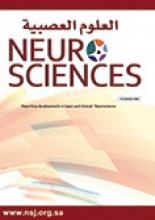Abstract
Six patients with cerebral tuberculoma seen over a 2 year period are reported. Their clinical presentations, the result of investigations including radiological findings and their response to medical treatment are discussed and correlated with other reports in the literature. Eighty five percent of the patients were above the age of 30 years. All patients had negative past history of tuberculosis and both chest x-ray and erythrocyte sedimentation rate were within normal limits. Five patients presented with symptoms and signs of space occupying lesions but none had papilloedema. Two patients showed paradoxical enlargement or development of new tuberculous lesions during antituberculous therapy. The diagnosis was established by brain magnetic resonance imaging in 3 patients, and was further confirmed by brain biopsy in the other 3. All patients received antituberculous treatment for 12 months, except one who continued medication for 2 years. Four patients normalized with medical treatment. Intracranial tuberculoma must be included in the differential diagnosis of a space occupying lesion. Magnetic resonance imaging is a sensitive, non-invasive method to diagnose cerebral tuberculoma. Paradoxical enlargement or development of new tuberculomas during antituberculous therapy is a documented phenomenon which can be overcome by continuation of antituberculous treatment. Twelve months of antituberculous treatment is considered to be adequate to resolve intracranial tuberculoma.
- Copyright: © Neurosciences
Neurosciences is an Open Access journal and articles published are distributed under the terms of the Creative Commons Attribution-NonCommercial License (CC BY-NC). Readers may copy, distribute, and display the work for non-commercial purposes with the proper citation of the original work.






